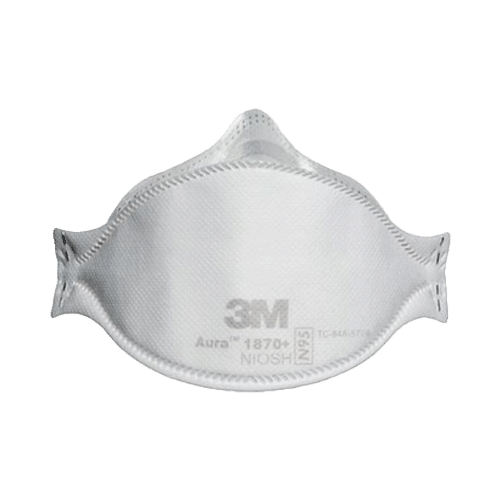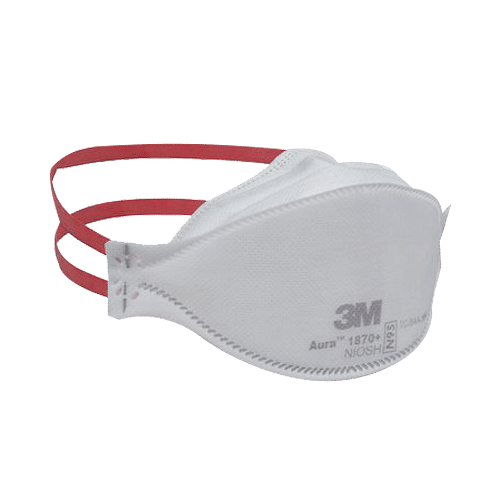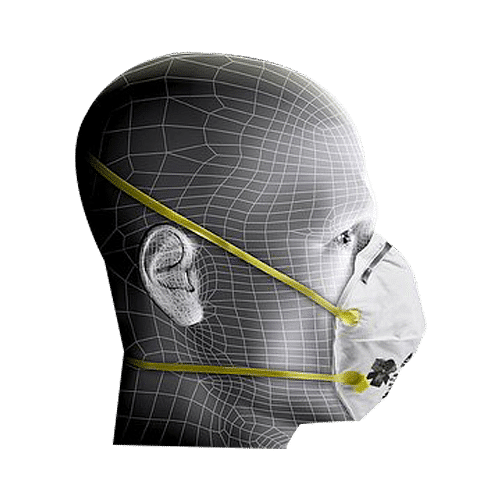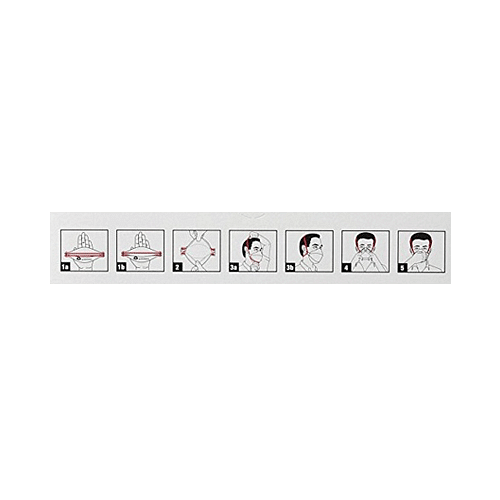



3M Aura 1870+ N95 Health Care Particulate Respirator Mask Pack of 120
Manufacturer
3M India Limited
Key Information
Short Description
The 3M Aura 1870+ N95 Health Care Particulate Respirator Mask is a disposable particulate respirator designed to provide respiratory protection against certain airborne particles, including those generated by electrocautery, laser surgery, and other powered medical instruments.
Dosage Form
Disposable particulate respirator mask
Introduction
The 3M Aura 1870+ N95 Health Care Particulate Respirator Mask is a disposable particulate respirator designed to provide respiratory protection against certain airborne particles. It is intended to reduce wearer exposure to certain airborne particles and is designed to be fluid resistant to splash and spatter of blood and other infectious materials. The mask meets CDC guidelines for M. tuberculosis exposure control and is NIOSH approved.
Directions for Use
Pre-stretch the straps before placing the respirator on the face and position the respirator over the nose and mouth. Pull the top strap over the head, position it at the top back of the head and above the ears. Pull the bottom strap over the head and position it around the neck below the ears. Move the fingertips from both hands down both sides of the nose piece and mould it to the shape of the nose to seal air off effectively. Check the respirator-to-face seal for each wearing.
Safety Information
Side Effects
May cause breathing difficulties or discomfort in individuals with respiratory system diseases, asthma, or emphysema
Breastfeeding Warning
Consult medical advice before wearing the respirator if you are pregnant or breastfeeding
Pregnancy Warning
Consult medical advice before wearing the respirator if you are pregnant or breastfeeding
How it works
The 3M Aura 1870+ N95 Health Care Particulate Respirator Mask is designed to filter out at least 95% of non-oil based particles from the air, providing respiratory protection against certain airborne particles.
Quick Tips
Maintain the hygiene of the face and hands Check and make sure that the respirator is intact and not damaged, check the expiry date and if the mask is packed properly Before use, the wearer must read and understand the User Instructions provided as a part of the product packaging
Frequently asked questions
What is a N95 respirator?
N95 is a disposable particulate respirator that is designed to help provide reliable respiratory protection of at least 95% filtration efficiency against certain non-oil base particles.
Do 3M N95 respirator provide protection against infection?
Yes, NIOSH approved N95 respirator can help reduce inhalation exposures to certain airborne biological particles, but cannot eliminate the risk of contracting an infection, illness, or disease.
What is the correct method for applying 3M N95 respirator?
Pre-stretch the straps before placing the respirator on the face and position the respirator over the nose and mouth. Pull the top strap over the head, position it at the top back of the head and above the ears. Pull the bottom strap over the head and position it around the neck below the ears. Move the fingertips from both hands down both sides of the nose piece and mould it to the shape of the nose to seal air off effectively. Check the respirator-to-face seal for each wearing.
Is 3M N95 respirator available in different sizes?
No, the respirator is available only in one standard size.
What precautions one should take before wearing a N95 respirator?
Maintain the hygiene of the face and hands. Personal health conditions should be kept in mind. Check and make sure that the respirator is intact and not damaged, check the expiry date and if the mask is packed properly. Before use, the wearer must read and understand the User Instructions provided as a part of the product packaging.
Is everyone suitable to wear the 3M N95 respirator?
An individual with the following conditions have to consult medical advice before wearing it: suffering from the disease of the respiratory system, asthma or emphysema, etc. In case discomfort occurs after wearing a respirator, e.g. breathing, difficulties, dizziness etc. Pregnancy.
How and where can we check the availability of 3M N95 respirator?
N95 Respirator can be ordered and purchased from online pharmacies, various hardware stores & pharmacies, and supermarkets.
Is there any circumstance in which the use of a 3M N95 respirator should be avoided?
Yes, in case of the atmosphere containing less than 19.5% oxygen.
Can N95 respirator be used by the children as well?
No, as its size may not be applicable to children's faces and will affect the effectiveness. Therefore not suggested for children to use the mask.
What guidelines should be followed in storing the 3M N95 respirator?
Avoid its storage in hot and humid place. The place and containers for storage should be neat and clean. Note down the purchase date and keep the receipt.
How to 'dispose of' the used 3M N95 respirators?
Avoid direct contact with the used respirators. Put them in a plastic bag carefully wrap-up and dispose of in a covered refuse container.
Is there any fixed duration of time to wear the respirator?
No, it depends on different environmental situations. However, if breathing difficulty or any distress occurs, the wearer should immediately leave the hazardous area (such as the ward or the place with polluted air) and then take the respirator off.
When should a new respirator be changed?
Respirators need to be changed in one of the following situations: if the respirator is contaminated by the body fluid as blood or spittle. Or if the respirator is damaged.


